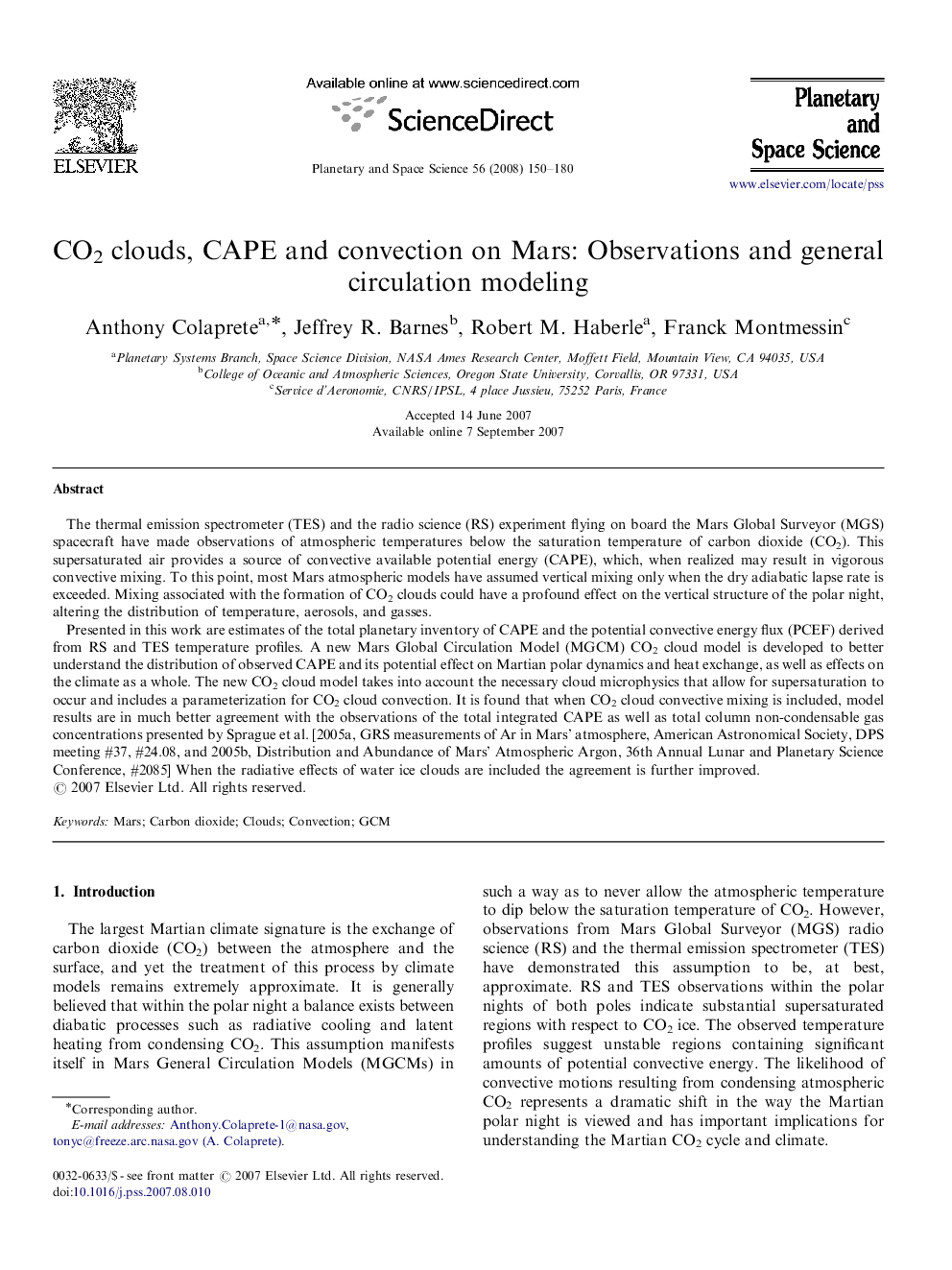| Article ID | Journal | Published Year | Pages | File Type |
|---|---|---|---|---|
| 1782810 | Planetary and Space Science | 2008 | 31 Pages |
The thermal emission spectrometer (TES) and the radio science (RS) experiment flying on board the Mars Global Surveyor (MGS) spacecraft have made observations of atmospheric temperatures below the saturation temperature of carbon dioxide (CO2). This supersaturated air provides a source of convective available potential energy (CAPE), which, when realized may result in vigorous convective mixing. To this point, most Mars atmospheric models have assumed vertical mixing only when the dry adiabatic lapse rate is exceeded. Mixing associated with the formation of CO2 clouds could have a profound effect on the vertical structure of the polar night, altering the distribution of temperature, aerosols, and gasses.Presented in this work are estimates of the total planetary inventory of CAPE and the potential convective energy flux (PCEF) derived from RS and TES temperature profiles. A new Mars Global Circulation Model (MGCM) CO2 cloud model is developed to better understand the distribution of observed CAPE and its potential effect on Martian polar dynamics and heat exchange, as well as effects on the climate as a whole. The new CO2 cloud model takes into account the necessary cloud microphysics that allow for supersaturation to occur and includes a parameterization for CO2 cloud convection. It is found that when CO2 cloud convective mixing is included, model results are in much better agreement with the observations of the total integrated CAPE as well as total column non-condensable gas concentrations presented by Sprague et al. [2005a, GRS measurements of Ar in Mars’ atmosphere, American Astronomical Society, DPS meeting #37, #24.08, and 2005b, Distribution and Abundance of Mars’ Atmospheric Argon, 36th Annual Lunar and Planetary Science Conference, #2085] When the radiative effects of water ice clouds are included the agreement is further improved.
